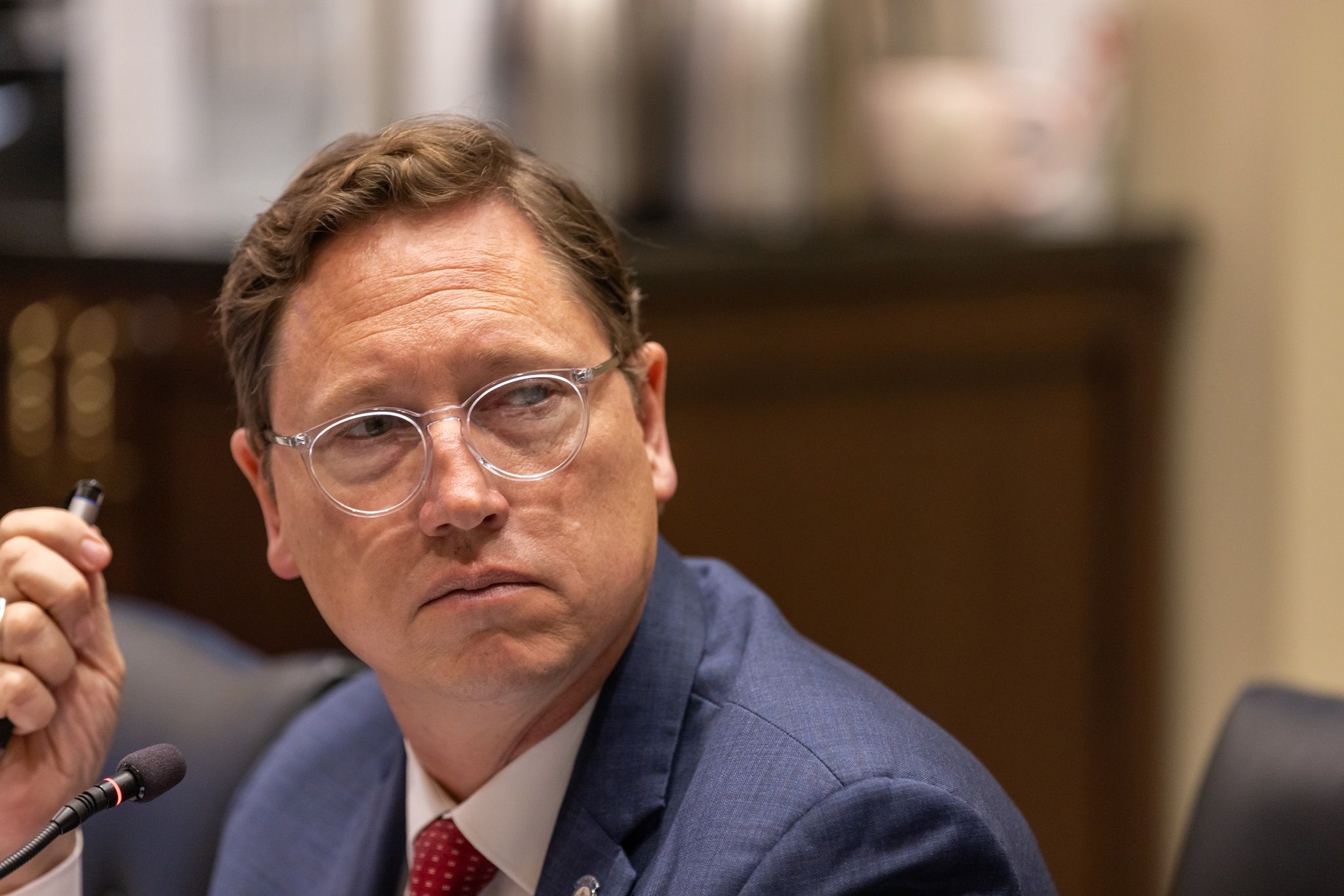Hill Hosts Eighth Annual Interim Study on Innovation Economy, Workforce

Rep. Brian Hill, R-Mustang, convened state leaders, industry experts and innovators at the State Capitol last week to present findings from an interim study on Oklahoma’s innovation economy and the challenges facing businesses within the state.
This is Hill's eighth annual study on this topic. He told attendees that he has pursued this study every year because the business landscape in the state is continually evolving.
"I believe we'll be able to identify certain factors that have changed since we began this work," Hill said. "And I hope by that, we can actually find solutions to current problems for our largest employers across this great state."
The study, which included presentations from the Oklahoma Center for the Advancement of Science and Technology (OCAST), the Oklahoma Defense Industry Association (ODIA), and the Oklahoma City Innovation District, highlighted measurable progress toward a coordinated innovation framework statewide.
Dr. Krista Ratliff, president and CEO of Fires Innovation Science and Technology Accelerator (FISTA) Innovation Park in Lawton, told attendees about how FISTA converted underused real estate into a thriving defense innovation hub and is now home to 28 partners. Ratliff said she continually receives questions about how to replicate FISTA's model in other states.
"No one can do it like FISTA," she added.
Oklahoma Center for the Advancement of Science and Technology (OCAST) Executive Director Dr. Jennifer McGrail shared about how the agency is helping startups access capital and connections.
"Our commitment is clear: innovation in Oklahoma is statewide," McGrail stated. "A founder in Woodward or McAllister or Guymon deserves the same access to the resources as does a founder in downtown Oklahoma City or Tulsa."
She said OCAST has already begun to address access to capital by removing some funding barriers and are now identifying pathways that help startups move from concept to customer. She said Oklahoma needs to concentrate on moving from singular successes to a "coordinated statewide innovation economy."
"The real question before us is what should come next for Oklahoma?" McGrail said. "We've proven that startups can thrive here. We've proven that investment, talent and bold ideas exist in every region. Now our challenge is to connect them, scale them and position them to compete nationally."
She said that, in addition to closing capital gaps and focusing on the future, Oklahoma must begin by rewarding innovation and risk-taking rather than simply incentivizing "what's familiar and safe."
Wheeler Bio CEO Pat Lucy said of the 42 new employees hired in the last year, 80% of them have been Oklahomans. He also pointed out how one of the biggest challenges their company faces is out-of-state travel, which has been a headache as they work with clients from across the country. He suggested working with airlines to increase frequency of flights to biotech hubs, like Boston or San Francisco, to help the field grow in the state.
Other speakers included Petroleum Alliance President Brook Simmons; Oklahoma Farm Bureau's Amarie Bartel; Oklahoma Cattlemen's Association Executive Vice President Michael Kelsey; Oklahoma Defense Industry Association Executive Director Allyson Carson; Oklahoma Department of Aerospace and Aeronautics Executive Director Grayson Ardies; Dr. Sharon Harrison representing Harrison Consulting Group; Oklahoma Motion Picture Alliance Chair Cassidy Lunnen; Chase Beasley with Tulsa Innovation Lab; OKC Innovation District President and CEO Jeff Seymour; and Chuck Gray, chair of the Governor's Council on Workforce and Economic Development.
Hill said that an innovation economy and a thriving workforce is crucial for Oklahoma.
"Regardless of partisanship and all of the rural versus urban divide, at the end of the day, we all want better for our children and our grandchildren than what we had," he said. "And by investing in ourselves and infrastructure across this great state, not just two urban hubs, but literally moving our state towards the idea of 10 economic hubs [where] every kid is within one hour of an economic opportunity, that, to me, is success for our long-term play."
